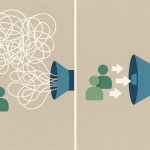Insomnia affects up to 50 percent of adults over 65, with around 17.7 percent meeting clinical definitions, according to analyses in peer-reviewed journals. More than half of seniors report they have trouble maintaining sleep throughout the night, while 40 percent wake earlier than intended. Women over 75 are especially affected. In studies, insomnia prevalence among women this age nears 75 percent, compared to about 53 percent of men. These findings are reinforced by recent Medicare data that show insomnia diagnoses are increasing year after year.
Body Clock Changes: How Aging Alters Sleep Patterns
A major biological factor is disruption in how the brain’s master clock, known as the suprachiasmatic nucleus, regulates melatonin and sleep rhythms. Melatonin secretion peaks earlier in older adults, often two to three hours before their morning wake-up time. This “phase advance” means nearly two-thirds of seniors fall asleep earlier and wake before 6 a.m.. As a result, the sleep window often does not line up well with social or personal schedules, leading to poor sleep quality.
The structure of sleep changes as well. Older adults lose slow-wave, deep sleep by about 2 percent per decade after age 30. This stage is important for feeling restored. In older people, slow-wave activity shows up to 40 percent less delta wave activity during deep stages compared to younger adults. This leads to shallower sleep and more frequent waking.
Other Physical and Social Factors Making Sleep Worse
Frequent nighttime urination, known as nocturia, is widespread. In adults over 70, nocturia interrupts sleep for 75 percent of women and up to 93 percent of men. Many older people make two or more bathroom trips nightly. Painful conditions like arthritis and nerve pain raise insomnia rates as well, with nearly a quarter of older adults with chronic pain reporting poor sleep.
Medicines also play a role. Polypharmacy is common: close to 60 percent of older adults who take five or more medicines have prolonged trouble falling asleep. Medications with sedating effects, while widely used, can create new health risks. More than a third use over-the-counter sleep aids containing antihistamines such as diphenhydramine. Use of these drugs can increase both fall and dementia risk.
Social factors interact with biology to exacerbate sleep disturbances. Loneliness, which is reported more frequently by older adults living alone or with limited social engagement, is associated with more fragmented and less efficient sleep. Language analysis of social media posts indicates a significant increase in expressions of fatigue and worry among older adults who report poor sleep.
Alternative Remedies: Sleep Products Older Adults Explore
Many older adults explore a range of sleep products after common approaches, such as lifestyle changes or prescribed sleep medications, fail to deliver consistent results. These include herbal teas with chamomile, valerian root supplements, magnesium tablets, and edible products containing plant compounds.
Products made with minor cannabinoids, including CBN Gummies, are one of several new options. Melatonin supplements and hemp-derived oils are often considered at the same time. Online testimonials mention people trying Gummies alongside other non-traditional aids in search of improved rest, though scientific backing remains limited compared to established therapies.
Stress, Screens, and Sleep
High nighttime cortisol levels are common in older adults with long-term insomnia. These stress hormones keep the brain in a state of alertness, which prevents deep sleep. Social media use before bed also stands out as a growing problem. Studies report that older users who browse platforms like TikTok late at night take nearly forty minutes longer to fall asleep, with many reporting anxiety and rumination while online.
Associated Health Problems and Risks
Sleep is tied to health in several practical ways. Poor sleep quality is linked to higher risks of heart disease and metabolic syndrome, particularly in women. Cohort studies have found seniors with chronic insomnia have higher death rates over ten years when compared with peers who sleep well. Medical reviews warn that sleep problems can speed up cognitive decline, with older adults losing memory at a faster rate if sleep is persistently fragmented. Medication routines also suffer, with sleep loss connected to lower rates of medicine adherence.
Effective Approaches for Better Sleep
Cognitive behavioral therapy for insomnia, known as CBT-I, remains the most effective treatment based on controlled studies. Over three-quarters of older adults treated with CBT-I report better sleep, falling asleep faster and waking up less. Exposure to natural daylight, especially in the morning, helps strengthen the body clock and increases deep sleep time by nearly a fifth in some studies. Techniques for managing nocturia, such as limiting evening fluids and using pelvic floor exercises, can cut nighttime bathroom trips nearly in half.
Conclusion
Age-related changes in brain rhythms, hormone cycles, medical problems, medication use, and social isolation all contribute to worsening sleep quality in older adults. These factors stack together, making sleep fragmentation and early waking more common. Interventions that address both biology and behavior, such as CBT-I, careful medication reviews, light exposure, and social engagement, offer the most consistent improvements. Experimentation with non-traditional sleep products is on the rise, but proven therapies remain the first choice for lifting sleep quality and reducing related health risks in aging populations.
Lynn Martelli is an editor at Readability. She received her MFA in Creative Writing from Antioch University and has worked as an editor for over 10 years. Lynn has edited a wide variety of books, including fiction, non-fiction, memoirs, and more. In her free time, Lynn enjoys reading, writing, and spending time with her family and friends.















